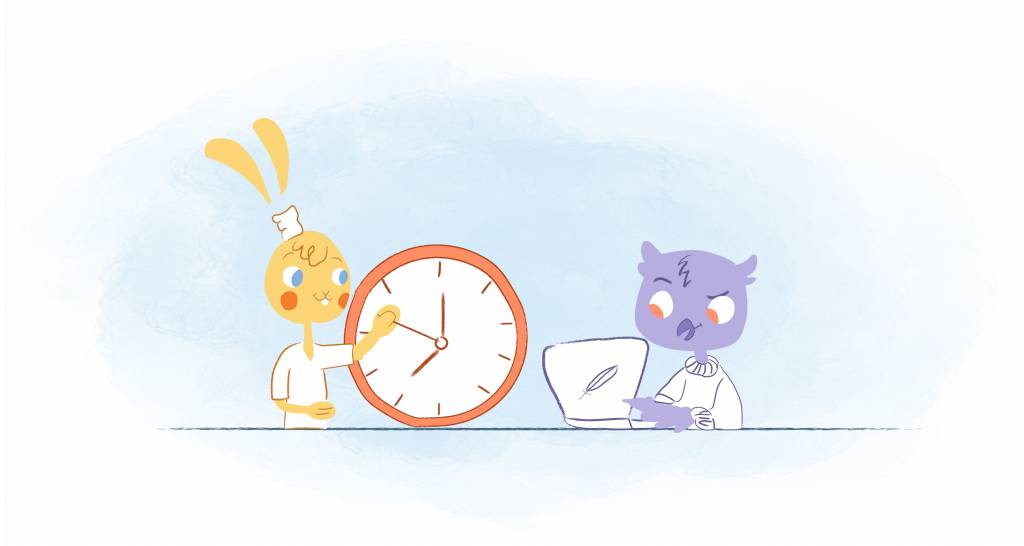

Having trouble keeping up with your never-ending to-do list? Do you have trouble finding a balance between your personal goals, your work, and your self-care? I suspect most of you are nodding your head. It’s a feeling we all share.
The question is, why do we do this to ourselves?
There isn’t just one answer. We are generally not very good at estimating how long things take. We all consider ourselves productivity superheroes and, therefore, grossly underestimate how long a project will take us. We call this the planning fallacy.
In addition, we tend to say “yes” to other people’s requests. This causes us to prioritize the needs of others over our own.
Managing time effectively is a crucial yet challenging skill. Imagine if there was a way to gain control, prioritize your goals, and get more done in less time.
Yes, there is. With the POSEC method, you can manage your time more effectively.
Understanding POSEC: The Framework for Success
As an acronym, POSEC stands for Prioritize, Organize, Streamline, Economize, and Contribute. You will learn how to set clear goals, plan your day strategically, and maximize your productivity during each step.
What makes POSEC stand out is that it’s not an ordered list of what you should do. As an alternative, you can use this method to examine what you need to do.
Also, it is guided by Maslow’s hierarchy of needs. For those unfamiliar with it, the hierarchy of needs is a pyramid-shaped chart that outlines how you need to meet your physiological needs before you can be truly fulfilled. The POSEC method, however, is supposed to guide you into achieving your goals without sacrificing your personal life.
The Five Principles of the POSEC Method
Having clarified the POSEC method, you’re probably wondering how it works.
By following all of the principles you will achieve your goals and maximize your time. Let’s examine each POSEC method principle and see how this time management technique can be applied.
1. Prioritize
Prioritizing is at the heart of the POSEC method. As such, it is vital to understand what matters most to you before tackling specific tasks. This involves reflecting on your long-term goals, values, and aspirations.
Defining your priorities and filtering your tasks by importance becomes easier when you answer these questions.
- What’s most important to you?
- What are my most important values in life?
- In the long run, what do I really want to accomplish?
- Do I have specific long-term goals in different areas (e.g., career, health, relationships)?
After you identify your priorities, you can identify the tasks that contribute directly to them. To put it another way, look at it from a “big picture” perspective.
From there, we can develop a plan to accomplish the daily tasks. This will provide us with a routine and stability that will be useful when we receive new out-of-routine goals.
2. Organize
Now that you know your priorities, it’s time to organize. In this step, you will create a structured plan for completing your tasks efficiently. To do this, follow these steps:
- Brainstorm all your tasks. Make a list of everything that needs to be done, personally and professionally. Using this brain dump, you can visualize your workload as a whole.
- Categorize tasks. Organize similar tasks into categories that are relevant to them. A few examples would include work-related tasks, errands, and personal development.
- Prioritize within categories. In each category, rank the tasks according to their importance and urgency. It is essential to consider deadlines, goals, and personal preferences when setting deadlines.
- Schedule your tasks. Organize your calendar or to-do list by allocating specific time slots to each task. When estimating time, take into account possible interruptions or delays.
Overall, you should categorize these tasks according to their urgency, importance, and alignment with your goals. Tools like the Eisenhower Matrix can be useful for this.
This organization step will give you a clear roadmap for your day, week, or month, ensuring you’re focused on your most important tasks first.
3. Streamline
The next step is to streamline your workflow now that you have a plan. By optimizing your work environment and eliminating distractions, you can increase your productivity. Listed below are some tips:
- Minimize multitasking. Focus on one task at a time to increase accuracy and avoid splitting attention.
- Set boundaries. Whenever you need focused time, inform colleagues or family.
- Utilize time management tools. You can structure your work sessions and take breaks using apps, timers, or the Pomodoro Technique.
- Minimize external distractions. Find a quiet place to work, turn off the notifications on your phone, and silence your phone.
You can complete tasks faster if you streamline your workflow and minimize distractions.
4. Economize
You have a limited amount of time, so make the most of it. To accomplish this, you need to identify and manage your peak productivity periods. Next, schedule tasks that require a lot of focus during those times.
Also, you can utilize tools and technology to do your job smarter, not harder. You can often get more done with short, focused bursts of work than with long, uninspired ones.
You might also consider trying the following strategies:
- Identifying time-wasters. Determine which activities consume much of your time without contributing much to your goals by analyzing your daily routine.
- Delegate or automate tasks. You can free up your time by delegating or outsourcing tasks to colleagues or contractors.
- Time blocking. Specific tasks should be assigned specific time slots. As a result, focused work periods are created, and distractions are minimized.
- Batching. To maximize efficiency, group similar tasks together to minimize context switching.
- Learning to say no. Be careful not to overextend yourself. It’s important to be polite when declining commitments that don’t align with your priorities.
By defining what is important and what requires less attention, we can better distribute our time. Choosing what to invest time and effort in maximizes our productivity. Using this method, we can identify areas that need more work.
In addition, setting deadlines for ourselves motivates us professionally and personally to become more efficient.
5. Contribute
Your final step in POSEC is contributing your time and skills to something bigger than yourself. Among the possibilities are:
- Engaging in activities that align with your values. Don’t let time or money dictate what you do. Focus on the things that bring you fulfillment, whether volunteering or creative pursuits.
- Helping others. If you need help, don’t hesitate to ask your colleagues, friends, or family.
- Contribute to your community. Volunteering is a great way to give back to a cause you care about.
By contributing to ourselves and others, we find fulfillment beyond checking off items on a to-do list. According to Maslow’s Hierarchy of Needs, these social motivators are crucial to achieving our goals.
In fact, POSEC is so successful because it emphasizes contribution. It is encouraged that people consider the joys that they experience in their lives. Doing this empowers someone to reach for happiness despite their busy schedules. This is a great tool for balancing work and life that only takes a few minutes to set up.
Benefits of Using the POSEC Method
- Improved focus and clarity. To avoid feeling overwhelmed and constantly chasing the next task, prioritizing is essential.
- Increased productivity. When you streamline your workflow and eliminate distractions, you can accomplish more in less time.
- Stress and anxiety are reduced. Having control over your life reduces stress and fosters a sense of accomplishment.
- Balance between work and life. Making time for activities that improve your overall well-being is an important part of POSEC.
- A greater sense of fulfillment. The satisfaction and purpose of contributing to something larger than yourself is indescribable.
Putting POSEC into Action
For a more practical introduction to the POSEC method, here are some useful tips:
- Start small. Do not try to revolutionize your entire life in one day. POSEC can be implemented for a specific project or portion of your day.
- Schedule weekly planning sessions. Organize your schedule, prioritize your tasks, and identify areas for improvement each week.
- Utilize to-do list apps and tools. Manage your responsibilities with the help of technology by setting reminders, tracking your progress, and organizing your tasks.
- Be flexible. Unexpected situations will inevitably arise. You should be prepared to adjust your schedule and priorities if necessary, but don’t lose sight of POSEC’s underlying principles.
- Take breaks and prioritize self-care. Exercise or spending time in nature can refresh and revitalize you.
- Celebrate your progress. Acknowledge your accomplishments, no matter how small or large. Maintaining motivation and focus will help you achieve your goals.
Conclusion
In contrast to rigid formulas, the POSEC method is a flexible framework that allows you to tailor your approach to your individual needs. Leading a more meaningful and productive life can be achieved by prioritizing, organizing, streamlining, economizing, and contributing.
However, for the POSEC principles to become natural and effective, you must practice them consistently.
FAQs
What is the POSEC Method?
As its name implies, the POSEC Method is a time management strategy based on the acronym POSEC, which stands for:
- Prioritize
- Organize
- Streamline
- Economize
- Contribute
This method emphasizes categorizing tasks, setting clear priorities, and allocating resources efficiently.
Is the POSEC Method effective?
Regarding time management, the POSEC Method can be effective for individuals who want a structured approach. Among its strengths are:
- Clear prioritization. By identifying the most critical tasks, you can focus on them.
- Improved time management. When you categorize tasks, you can allocate your time more effectively.
- Goal alignment. To achieve your overall goals, it encourages aligning activities.
However, it’s important to remember that the POSEC Method is a framework, not a rigid system. Its effectiveness depends on individual adaptation and preferences.
Who might benefit from the POSEC Method?
A person who struggles with the following:
- Procrastination
- Overwhelm due to multiple tasks
- Difficulty achieving goals
- Maintaining a work-life balance
Are there any limitations to the POSEC Method?
There are several advantages to the POSEC Method, but there are also some potential limitations:
- Categorizing and prioritizing tasks during the initial setup may take time and effort.
- A highly dynamic situation with frequent changes and unexpected disruptions might not suit the method.
- To be successful, self-awareness and discipline are required.
Image Credit: cottonbro studio; Pexels











John Hall
John Hall is the co-founder of Calendar a scheduling and time management app. He’s also a keynote speaker that you can book at http://www.johnhallspeaking.com.